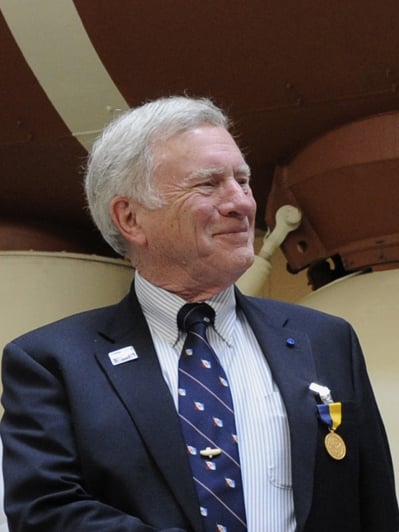In 2010 three groups announced plans to develop and send a manned submersible to the deepest place in the World Ocean, the almost seven-miles-down “Challenger Deep.” Located in the Marianas Trench about 300 miles from Guam, it was discovered in 1951 by the British research ship HMS Challenger.
On 23 January 1960 the U.S. Navy’s bathyscaph Trieste with two men on board made a nine-hour dive to this deepest spot. (See “Dr. Piccard and His Wonderful Electric Submarines,” p. 102, September 2011 Proceedings.) No manned vehicle has been back in the 51 years since. However, two unmanned submersibles have done it. The first was the Japanese remotely operated vehicle (ROV) Kaiko in 1995 (and again in 1998). The other submersible was the unmanned/untethered vehicle (AUV) Nereus. Designed, built and operated by the Woods Hole Oceanographic Institution, it went to the Challenger Deep in 2009, spending ten hours at the bottom.
Remarkably, the coincidence of three teams developing manned submersibles to return to the deepest place in the ocean is just that—a coincidence. Nevertheless, the media like to characterize these parallel programs as a “race,” as this is much better press.
The highest-visibility effort is being made by Virgin Oceanic, organized by Sir Richard Branson and his American partner, yachtsman Chris Welsh. Creation of the company was announced at a major media event in April 2010.
Their $17 million submersible began life in 2005 as the Deep Flight Challenger, built for the American Steve Fossett, holder of more than 100 world records for various adventures. Sadly, he died in a 2007 airplane crash. At the time the sub was 80 percent completed. In 2009 Welsh bought the project and its mother ship, the Cheyenne, from the Fossett estate.
This one-person submersible essentially “flies” underwater and even looks a bit like an airplane. The “deep-flight” design concept was developed in the mid-1990s by British-born inventor Graham Hawkes. The Virgin Oceanic submersible marks his third generation of deep-flight vehicles.
The vessel’s pressure hull uses a wound carbon-fiber cylindrical section capped at one end by a transparent fused-quartz dome and at the other end by a titanium one. This type of design and construction is at the very cutting edge of deep-submergence technology.
At the 2010 event, the Virgin Oceanic partners optimistically announced their sub would dive to the Challenger Deep before the end of 2011. It would be the first in a series of dives to the deepest places in the five oceans. By the end of 2011 it had become apparent that the initial test dives will not happen until the first half of 2012.
The second team gearing up for the Challenger Deep is being led by film director, producer, and underwater engineer James Cameron. Planning, design, and construction work have been going on for several years.
Cameron’s $8-million, one-person submersible is nearing completion in Australia. Sea trials should begin in the first quarter of 2012. When they are satisfactorily completed, Cameron himself plans to pilot the sub to the bottom of the Challenger Deep.
The Cameron team has been rather secretive about design and operational plans other than the overall goal of making the deepest dive. There has been some fragmentary mention about making dives in other deep ocean trenches after the Marianas dive is completed.
Triton Submarines in Vero Beach, Florida, is the third team working up to the Challenger challenge. Unlike the Virgin Oceanic and Cameron submersibles, Triton’s will be a three-person vehicle. The Triton 36,000 will use a spherical borosilicate glass-pressure hull. While glass is very strong and its strength increases with pressure, it also can fail suddenly when scratched. Triton says it has a solution that will result in a strong hull structure not susceptible to stress-crack failures.
Triton Submarines began work on the submersible in early 2011, so Triton is the “new kid” among the three teams. Design work is almost completed, and the company is now soliciting investors for the $15-million project. It is not known when Triton will begin to “cut metal.”
What is the point of these three programs? A submersible that can dive to about 20,000 feet can reach 98 percent of the seafloor. Is there a benefit to going that last 16,000 feet to reach the last 2 percent? The answer is yes, as that remaining seafloor area contains all of the oceans’ deep trenches.
While unmanned submersibles such as the ROV and the AUV will do much of the deep research work, it is also important for man to go there as well.
When asked, “Why man?” the late, great American oceanographer Roger Revelle said, “Because you cannot surprise an instrument.” The three deep teams will help keep those surprises coming as they exploit the frontiers of technology and deep-sea knowledge.





